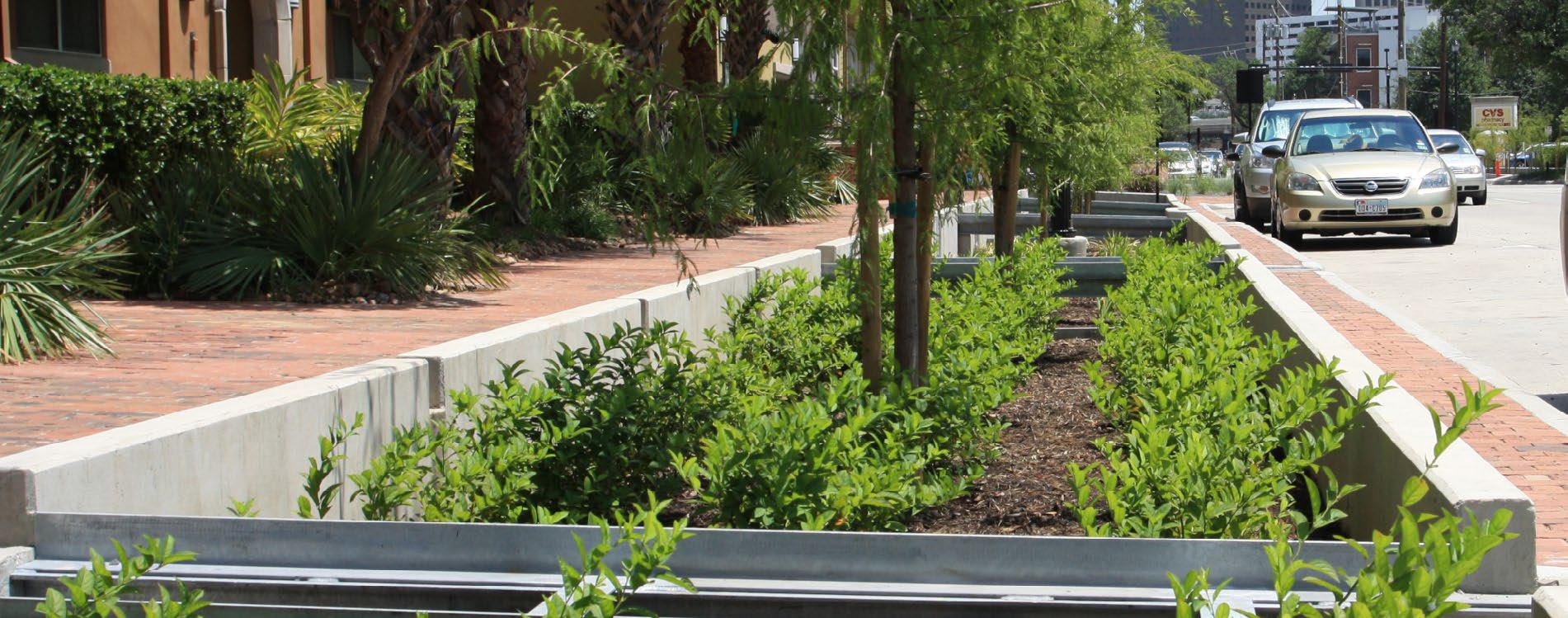COMPLETE INTEGRATED SYSTEMS & SOLUTIONS WITH UNMATCHED FUNCTIONALITY, PERFORMANCE AND MAINTAINABILITY.
Our mantra at Greenrise is to provide the highest level of compliance at the lowest overall price. Although this sounds too good to be true, through creativity and innovation, we don’t rest until we achieve that goal. This way of thinking has led us to a suite of solutions centered around bioretention and bioswale design that focuses on ease of installation and a vast reduction in the cost of long-term maintenance. Although our approach bucks conventional thinking, the modern bioretention approach treats more stormwater and greatly extends required maintenance intervals, at a lower upfront cost. This, along with a years’ worth of maintenance and unparalleled quality control, makes the Greenrise approach to design unmatched in the marketplace.
What We Do
These multifunctional stormwater design solutions efficiently manage stormwater by using carefully blended and installed bioretention media. This approach increases lot yield, reduces the need for expensive storm sewer infrastructure, and enhances stormwater quality, all while creating aesthetically appealing stormwater facilities.
Services
Site Preparation
Excavation
Underdrain Installation
Media Installation
Vegetation Planting
Mulch Installation
Hydraulic Conductivity Testing
Maintenance


![Birnamwood 5 1024×682 1[1] Birnamwood 5 1024x682 1[1]](https://greenrisetech.com/wp-content/uploads/2022/09/birnamwood-5-1024x682-11-400x275.jpg)

WHY GREENRISE? WELL ORGANIZED. DETAIL-ORIENTED. UNMATCHED RESPONSIVENESS.
Greenrise was created from a drive to not only bring solutions for erosion and sediment control, and stormwater runoff treatment, but to do it with the best products like certified bioretention soil and proven erosion solutions, and services like SWPPP management and vegetated roof design. This was our goal from the start, and it is still what pushes us forward every day.
 SIGN UP TO RECEIVE THE LATEST NEWS
SIGN UP TO RECEIVE THE LATEST NEWS